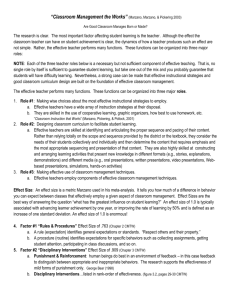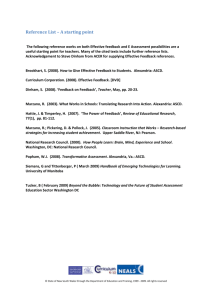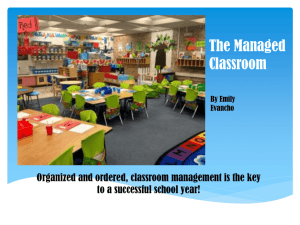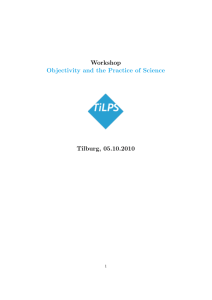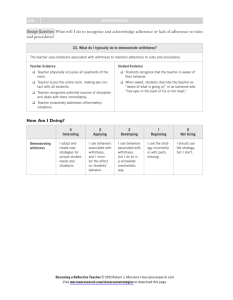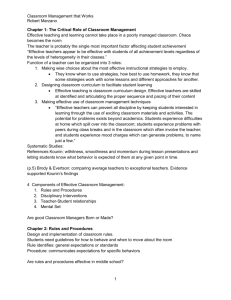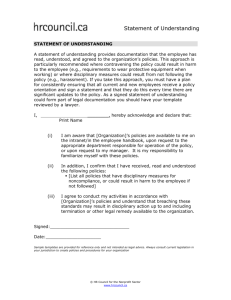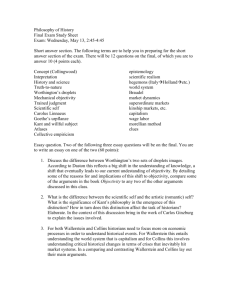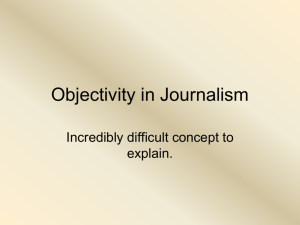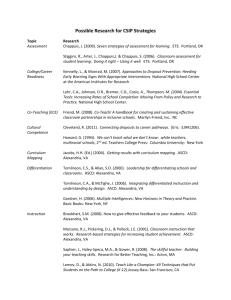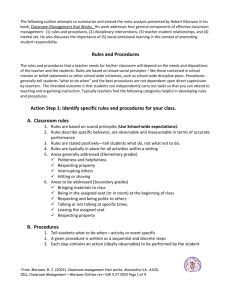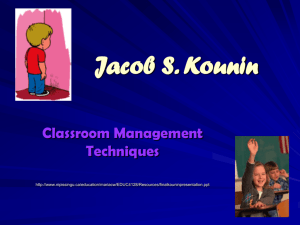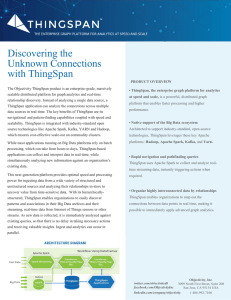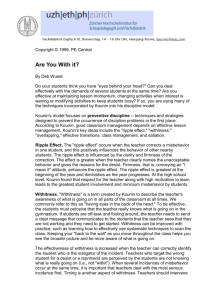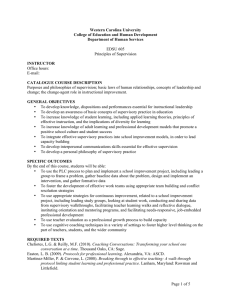Mental Set
advertisement
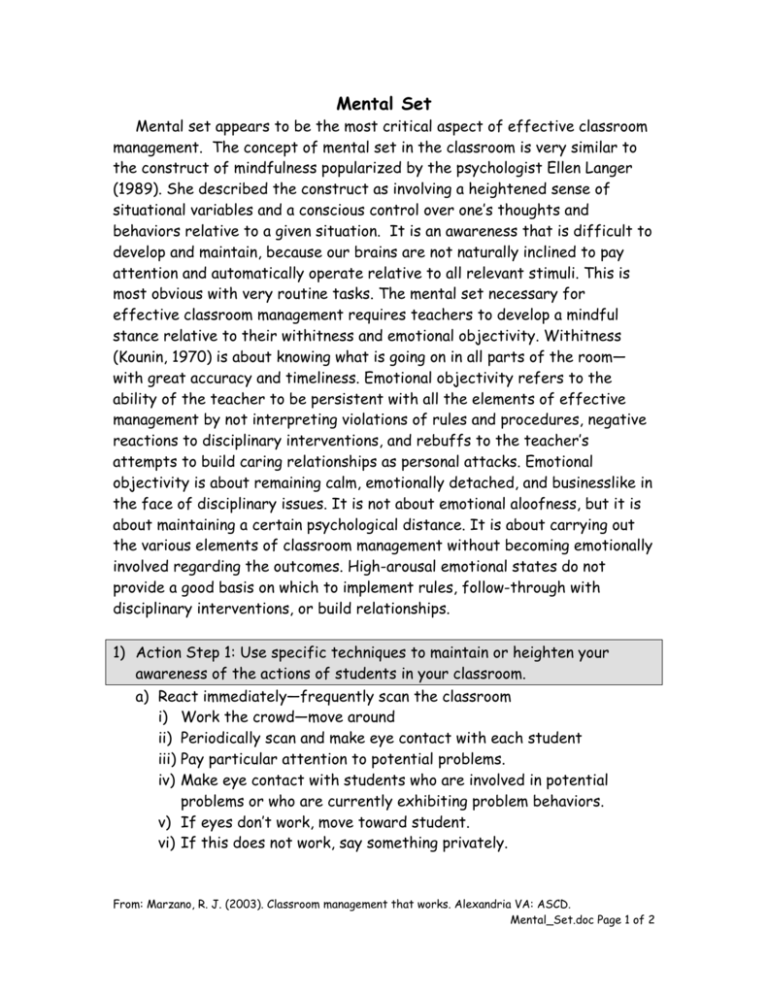
Mental Set Mental set appears to be the most critical aspect of effective classroom management. The concept of mental set in the classroom is very similar to the construct of mindfulness popularized by the psychologist Ellen Langer (1989). She described the construct as involving a heightened sense of situational variables and a conscious control over one’s thoughts and behaviors relative to a given situation. It is an awareness that is difficult to develop and maintain, because our brains are not naturally inclined to pay attention and automatically operate relative to all relevant stimuli. This is most obvious with very routine tasks. The mental set necessary for effective classroom management requires teachers to develop a mindful stance relative to their withitness and emotional objectivity. Withitness (Kounin, 1970) is about knowing what is going on in all parts of the room— with great accuracy and timeliness. Emotional objectivity refers to the ability of the teacher to be persistent with all the elements of effective management by not interpreting violations of rules and procedures, negative reactions to disciplinary interventions, and rebuffs to the teacher’s attempts to build caring relationships as personal attacks. Emotional objectivity is about remaining calm, emotionally detached, and businesslike in the face of disciplinary issues. It is not about emotional aloofness, but it is about maintaining a certain psychological distance. It is about carrying out the various elements of classroom management without becoming emotionally involved regarding the outcomes. High-arousal emotional states do not provide a good basis on which to implement rules, follow-through with disciplinary interventions, or build relationships. 1) Action Step 1: Use specific techniques to maintain or heighten your awareness of the actions of students in your classroom. a) React immediately—frequently scan the classroom i) Work the crowd—move around ii) Periodically scan and make eye contact with each student iii) Pay particular attention to potential problems. iv) Make eye contact with students who are involved in potential problems or who are currently exhibiting problem behaviors. v) If eyes don’t work, move toward student. vi) If this does not work, say something privately. From: Marzano, R. J. (2003). Classroom management that works. Alexandria VA: ASCD. Mental_Set.doc Page 1 of 2 b) Forecast problems—identify potential difficulties and make plans to prevent or think about how you will intervene. Prevention is always better, do not “lay in wait.” c) Observe a master teacher. 2) Action Step 2: Use specific techniques to maintain a healthy objectivity with students. Squelch anger and frustration when delivering negative consequences. Do not be sorry for enforcing rules by implementing consequences. One can express empathy for the student’s choice, but do not express that you are sorry for what you must do in response. a) Look for reasons why—reframe. Attribute best possible motives. b) Monitor your own thoughts. Do not hold grudges. Start fresh. i) Mentally review and anticipate problems with particular students. ii) Try to replace negative expectations with positive ones. (Everyone will do something right.) iii) When interacting with those students, think about your positive expectations. c) Take care of yourself—deep breathing, guided imagery, sense of humor, seek opportunities to laugh, be your own best friend. References: Kounin, J. (1970) Discipline and group management in classrooms. New York: Holt, Rinehart, & Winston. Langer, E. J., (1989). Mindfulness. Reading, MA: Addison-Wessley. From: Marzano, R. J. (2003). Classroom management that works. Alexandria VA: ASCD. Mental_Set.doc Page 2 of 2
